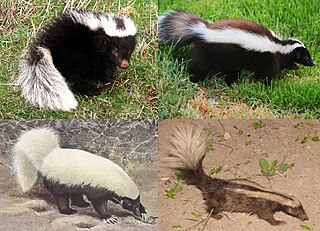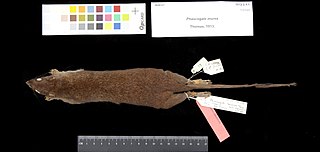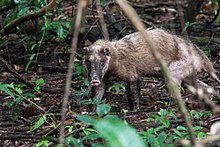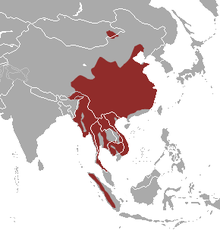
Badgers are short-legged omnivores in the family Mustelidae. Badgers are a polyphyletic rather than a natural taxonomic grouping, being united by their squat bodies and adaptions for fossorial activity. All belong to the caniform suborder of carnivoran mammals.

The hog-nosed skunks belong to the genus Conepatus and are members of the family Mephitidae (skunks). They are native to the Americas. They have white backs and tails and black underparts.

The greater hog badger is a very large terrestrial mustelid native to Southeast Asia. It is listed as Vulnerable in the IUCN Red List of Threatened Species because the global population is thought to be declining due to high levels of poaching.

The short-furred dasyure, also known as the short-haired marsupial mouse, is a member of the order Dasyuromorphia. It was once recognised as the only species in the genus Murexia, but now five species are recognised. It lives in Papua, Indonesia and Papua New Guinea.

Murexia is a genus of mouse-sized dasyure, in the marsupial order Dasyuromorphia. They are found in Papua, Indonesia and Papua New Guinea.

Diplacodes is a genus of dragonflies in the Libellulidae family. They are commonly known as perchers. Their colours range from the totally black body of the African Diplacodes lefebvrii, the lovely pale blue of India's Diplacodes trivialis, to the intense red of the Asian–Australian Diplacodes haematodes.

The broad-striped dasyure is a species of marsupial in the family Dasyuridae. It is endemic to Papua New Guinea. Its natural habitat is subtropical or tropical dry forests.

The velvety fruit-eating bat, also known as Hart's little fruit bat, is a species of bat in the family Phyllostomidae. It is the only species within the genus Enchisthenes. It is found in Central America, Mexico, the United States, and northern South America.

The northern hog badger is a species of mustelid native to South and East Asia.
The Sumatran hog badger is a species of mustelid endemic to the island of Sumatra in Indonesia.

















